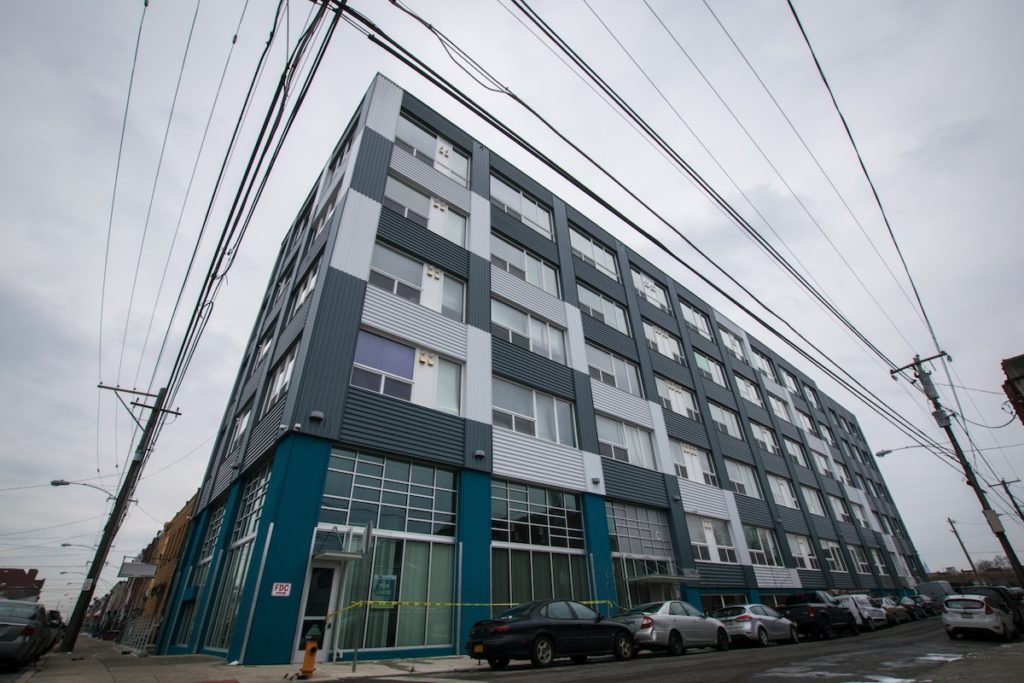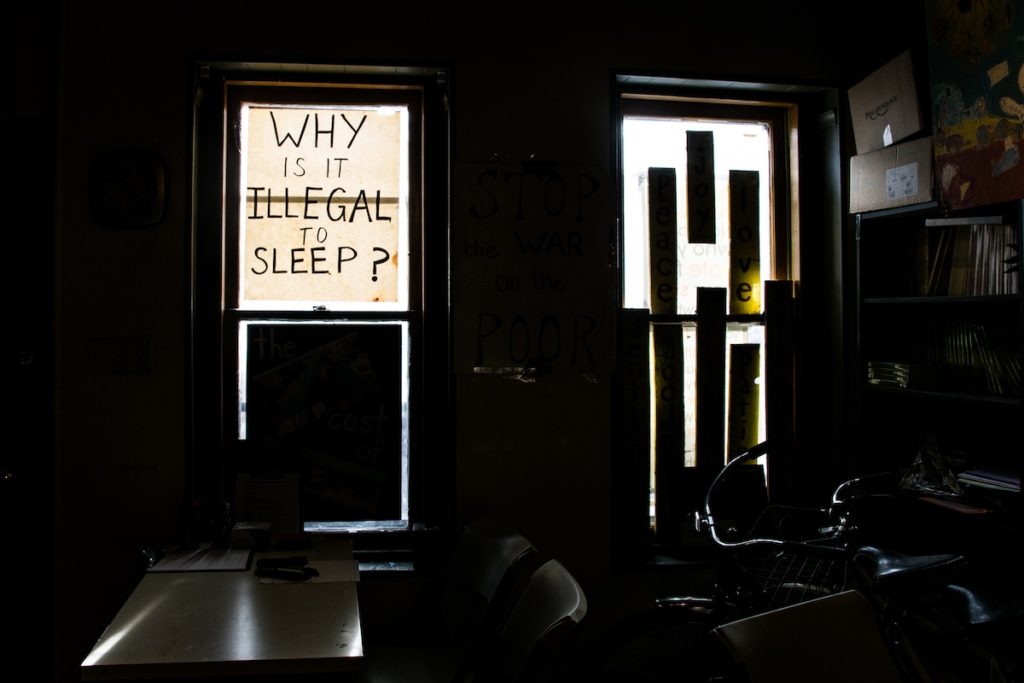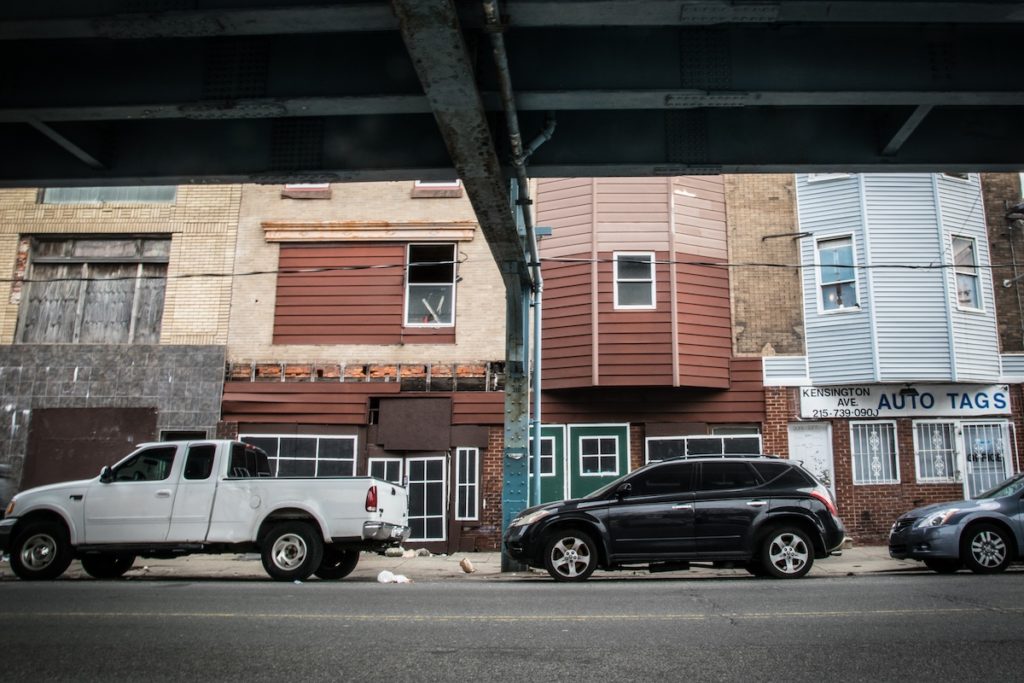How hard is it to convert vacant buildings into affordable homes for Kensington residents in need?
 February 18, 2019
Category: Feature, Featured, Long, Method
February 18, 2019
Category: Feature, Featured, Long, Method
This story was written by Temple University students Henry Savage, Evan Easterling and Erin Blewett and originally published on Kensington Voice, a new community-driven newsroom serving the heart of Kensington.
Before Miguel Diaz purchased and renovated an abandoned house on Potter Street in Kensington, he worried he could never afford a comfortable home for himself and his daughter in the neighborhood where he grew up.
At the time, they were living down the street with six family members in a three-bedroom row home where his single mother raised him and his four siblings a decade before.
Diaz wanted to find more space for him and his daughter, but the only option he knew was the Housing Choice Voucher Program, also known as Section 8. An application for Section 8, which is a federally funded rental assistance program for families with low income, can take years to process. The demand in Philadelphia is so high that the waitlist is closed.
A common problem in America’s poorest big city
Housing struggles like Diaz’s are common in Philadelphia, the poorest of the 10 biggest cities in the United States. In 2018, nearly 11,000 people experiencing homelessness were served in the city’s emergency shelters, safe havens or transitional housing, and the poverty rate hovered at around 26 percent. Close to half of city residents who were living in poverty were living in deep poverty, which means for one adult with two children, they earned an income of less than $10,000 a year.
Despite the need for housing assistance in the city, government-assisted housing is scarce and difficult to secure. When the waiting list is open, programs like Section 8 require long waiting periods and documentation such as photo identification, social security cards, pay stubs and bank statements that some people don’t possess. Therefore, many families like Diaz’s share space instead.
But in a neighborhood filled with vacant buildings, Kensington’s abandoned buildings have the potential to be turned into safe, affordable homes. Some local nonprofits, individuals and developers are already rehabilitating them to create affordable homeownership and rental opportunities. Their success poses the question of whether similar projects can create affordable housing for members of the community, including people experiencing homelessness.
Collaborating to renovate one home at a time
About 15 years before Diaz became a homeowner, he watched a bomb squad unit investigate a grenade in a vacant shoe repair shop across from his house. That day, Diaz met Shane Claiborne, a cofounder of an organization called The Simple Way. The Simple Way had purchased the shoe repair store, and volunteers were cleaning it out when they found the grenade.
The Simple Way provides Kensington residents with emergency services, housing and food. Claiborne founded the organization in 1998 with some fellow students from Eastern University. They were inspired by the Kensington Welfare Rights Union (KWRU) a group of Kensington mothers led by anti-poverty advocate Cheri Honkala, who used an abandoned church to provide shelter for people experiencing homelessness a few years earlier.
According to Claiborne, KWRU hung a banner in front of the church that said, “How can we worship a homeless man on Sunday and ignore one on Monday?” As a Christian, that was particularly memorable to him.
In 2014, The Simple Way decided to open another branch of their organization called Simple Homes to help families purchase and renovate vacant houses in the neighborhood.
“At the time, there were 3,000 families on the waiting list for housing,” Claiborne said. “Yet we have all of these abandoned buildings.”
Diaz was one of the first neighbors to welcome Claiborne and The Simple Way to the neighborhood, so Simple Homes offered him and his daughter the first home. Simple Homes assisted Diaz in getting the property, and Diaz worked with Simple Homes to renovate the house.
“We want to stabilize families who live here,” said Claiborne, who emphasized their process as a collaboration. “We won’t build a house for you, but rather, build a house with you.”
Since working with Diaz, the organization has worked with three more neighborhood families to purchase and renovate vacant homes. The first Simple Homes property is located on Potter Street near H Street, and the other houses are all within the 19134 ZIP code.
Since becoming a homeowner, Diaz joined The Simple Way as a board member, started working as a coach for the Special Olympics, and now teaches other families that Simple Homes assists how to renovate and maintain their houses.
According to Diaz, the renovation process relies on roughly 350 hours of volunteer work from the organization and the family. Diaz said that this process gives the family more responsibility and connection to the home.
“I teach homeowners how to maintain and fix the home because when you close the deal, we are not a landlord — you are the owner of a house now,” Diaz said.
To pay for the property acquisition and renovations, Simple Homes tries to raise between $30,000 and $35,000 in donations through IndieGoGo, an online fundraising platform. According to Claiborne, acquisition costs can range from $500 to $10,000. The surplus is used toward renovations.
Simple Homes then sets families up with a no-interest mortgage paid monthly to the organization, which then uses the mortgage payments to supplement money raised through donations to continue similar projects. Payments are usually about one-third of the household’s monthly income and are negotiated between families and Simple Homes.
“With no interest rate, there’s less pressure on my shoulders,” Diaz said. “My mind’s focused on paying this house off as fast as I can because I want something for my family, my niece, my daughter.”
Renovating buildings for people with different needs
While The Simple Way creates affordable homeownership opportunities for renters in the neighborhood, some longtime residents like Dennis Payne wonder if vacant buildings in Kensington could be converted into housing for the neighborhood’s growing population of people experiencing homelessness.
Between 2017 and 2018, the number of people living on the street in Kensington more than doubled from 271 to 703, and the neighborhood currently has two shelters with a total of 80 beds. In December, the city said it would open 30 more shelter beds in the area by January, but due to pushback from some residents, it won’t be ready because the city cannot lock down a location.

Kensington resident Dennis Payne sits in front of an abandoned house on Jasper and Wensley streets. (Photo by Erin Blewett)
“When you tell me, ‘Not with my tax dollars and not on my block,’ these people were at one point taxpayers,” said Payne. “As far as ‘not on my block’ — well, they’re already on my block.”
Dana, who requested her last name be withheld for this story, has been experiencing homelessness in Kensington for the past year. She was sleeping outside and in abandoned buildings until July when she was assaulted by two men.
Now Dana is staying at a shelter, but she feels the sheltering schedule — which requires people to leave from 7 a.m. to 7 p.m. — is unfair. As a result, people walk the street searching for food, water and bathrooms until they’re allowed to return.
Converting vacant houses into homes for people like her could decrease crime and create construction jobs for people in the neighborhood, she said, as she counted 11 abandoned properties from where she stood.
“It would kill a lot of birds with one stone,” Dana said.
Jamie Moffett, of the former Kensington Renewal Initiative, just finished renovating a handful of abandoned houses in the 19134 ZIP code. Moffett’s original goal was to convert them into owner-occupied homes for long-time renters in the neighborhood, but after some trouble refinancing his properties, he is renting them instead.
“I’m just a little fish and didn’t have the resources,” Moffett said.
Moffett’s rentals will cost $825 per month and will be rented through a property management company, which accepts housing vouchers (Section 8). But when asked what he thought about converting abandoned homes into housing for people experiencing homelessness, he was skeptical.
“I don’t see a way for that to happen unless there’s some magic government money I’m not aware of,” Moffett said.
However, Moffett noted that the average rent in Kensington is less than the cost of sheltering someone for a month. In 2016, the average median gross rent was $812.60 for the five census tracts — 161, 163, 177.01, 177.02 and 178 — Kensington Voice uses for Kensington, according to the U.S. Census’ American Community Survey.
At a meeting on Nov. 27 at McPherson Square Library, Liz Hersh, the director of the city’s Office of Homeless Services, said each shelter bed costs the city $45 per day, or an average of $1,350 a month — well above the neighborhood’s average rent. One person spending a year in permanent supportive housing costs the city about $12,500 each year — about $1,040 a month — is also more expensive than the neighborhood’s average.
While Hersh believes there will always be a need for shelters, with more affordable and permanent supportive housing, the demand for shelters would decrease, she said. To successfully address the needs of all residents, Hersh added that there is a need for rentals at different price points, homeownership at different price points, and housing equipped for people with special needs.
“Unlike some of the West Coast cities where they just don’t have enough housing stock,” Hersh said, “we really do have housing stock, and that could be renovated, rehabbed or demolished and replaced.”
Expanding small-scale rehabilitation projects
Jumpstart Kensington is focused on revitalizing blighted properties to fill some of the needs Hersh mentioned through a mix of affordable and market-rate rentals and owner-occupied homes.
The Jumpstart Kensington initiative, which is modeled after Jumpstart Germantown, trains cohorts of developers and provides them with networking, mentoring and loans. Its goals include supporting scattered-site rehabilitation, which entails renovating two or three vacant houses on a given block and improving neighborhood safety by reducing the number of broken-down properties.
According to Ken Weinstein, who founded Jumpstart Germantown, once developers finish rehabilitating a property, the next step — whether the building gets rented or resold — is up to the individual developer. A survey in 2017 found that half of Jumpstart Germantown’s loans were for rentals and the other half were for homeownership, which Weinstein called “a perfect balance.”
However, funding for initiatives like Simple Homes, a nonprofit that relies on donations, and Jumpstart Kensington, which relies on money from Impact Services through JP Morgan’s PRO Neighborhoods award, can be difficult to secure in the first place.
New Kensington Community Development Corporation (NKCDC) obtains funding through private, state and federal grants. According to Andrew Goodman, the director of community engagement for NKCDC, funding sources are time-limited. For example, he explained, there may only be one chance a year to apply. And at the state level, there is often limited space for awardees in Philadelphia County each year.

The Orinoka Civic House in Kensington is located at the intersection of Ruth and Somerset streets. The building is NKCDC’s biggest low-income housing project to date. (Photo by Erin Blewett)
So far, NKCDC’s biggest housing project for families with low income is the Orinoka Civic House. The building, which was once a textile mill and then an abandoned factory, is now a $17.8 million, 51-unit complex for individuals and families in need of affordable housing. Rent for these units range from $174 to $600 per month, Goodman said.
Without that grant money, projects that support existing neighborhood residents’ needs are difficult to acquire.
At Seventh and Somerset Streets, Orens Brothers Real Estate is working on a state-funded project in partnership withMosaic Development Partners and Veterans Multi-Service Center. They’re converting the remains of Thomas Edison High School into the Edison 64 veteran community — a $10 million project to create a 66-unit apartment complex. A veteran multi-service center on the first floor will provide employment assistance, among other services.
But according to Chad Orens, the assistant project manager of Edison 64, development deals like Edison 64 don’t happen without government funding, which is scarce for nonprofit housing projects. For developers looking to make a profit, Kensington can be a high and risky investment, Orens said.
“We’ve been approached by banks with a folder of 35 properties all around this neighborhood, all abandoned, owned by the bank,” Orens said. “However, you have to purchase them as a package and can’t buy them individually.”
For this reason, developers look towards more lucrative ZIP codes like 19123 (Northern Liberties) and 19146 (Point Breeze) for investment.
“For developers, it comes down to someone having the foresight that in 15 years a property is going to be a gold mine,” said Orens, citing the neighborhood surrounding Temple University as an example. “A building 20 to 30 years ago that might have cost $30,000 now goes for $400,000.”
Residents like Payne are aware of the foresight Orens described, and are wary of wealthy developers with intentions of buying vacant properties and selling to more affluent populations.
“These buildings are going to be torn down, and they’re not going to be used for the people of Kensington,” Payne said. “Some of these lots which are only worth $1,200, will have $300,000 homes on them.”
If that were the case with the house on Potter Street — which was vacant for 20 years before Diaz purchased it — things could be much different today for Diaz and his daughter.
“I want my family to have this home for generations,” Diaz said.
Project
JumpstartTrending News












